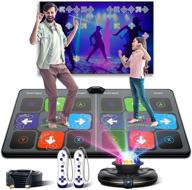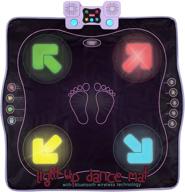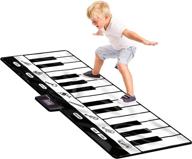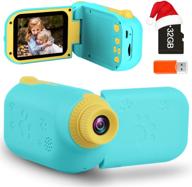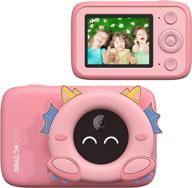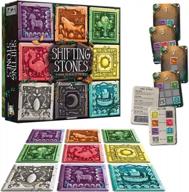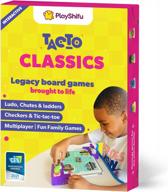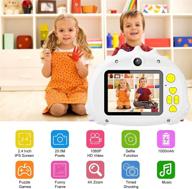How to choose the right video player for your child?
Choosing the right video player for your child can seem daunting given the many options on the market. Here are some tips to help you pick the best one for your kid's needs and entertainment.
Consider screen size
- Small screen (3-5 inches) - best for toddlers as it's lightweight and easy to hold.
- Medium screen (5-7 inches) - ideal for preschool and early elementary school ages.
- Large screen (7+ inches) - great for older elementary school kids.
Durability and battery life
Look for video players made of durable plastic that can withstand drops. Battery life should last at least 5 hours so kids aren't left without entertainment.
Parental controls
Controls like time limits, content filtering, and disabling internet access allow you to manage what your child accesses.
Storage capacity
Minimum of 8GB is recommended to hold ample videos, music, eBooks, and more. Expandable memory card slot enables additional storage.
Content capabilities
Ensure the player supports common video and audio formats. Ability to read eBooks, display photos, and play pre-loaded games provides more options.
The right pick depends on your child's age, needs, and your budget. Prioritize durability, battery life, and parental controls to get the best value.
Another interesting products
How to set up parental controls on a kid's video player?
Parental controls allow you to restrict access to content and features on your child's video player. Here is how to set them up:
Top products in 👦 Kids' Personal Video Players & Accessories
Activate device protection
Turn on PIN, pattern, or password protection so your child can't bypass controls without a code.
Similar products
Set time limits
- Designate time allotments for daily or weekly use.
- Set a timer to automatically shut off the device when limit is reached.
Filter content
- Block access to specific apps or internal storage folders.
- Enable YouTube Restricted Mode to limit video availability.
Disable features
| Camera | Prevent photos/videos. |
| WiFi | Limit web access. |
| Location | Disable location tracking. |
Monitor usage
Review history of videos watched, websites visited, apps used to ensure appropriate content.
Establishing parental controls takes a bit of time upfront, but gives you great peace of mind knowing your child's video player usage is secured and monitored.
How to load videos and music onto a portable video player for kids?
Loading entertainment content onto a portable video player keeps kids engaged on long trips and more. Here are some tips for adding videos and music:
Find video and music files
Gather files from your computer, online sources, CDs/DVDs. Top sources include:
- iTunes or other media library on your computer
- Free sites like YouTube for videos
- Paid subscription services like Netflix for videos
- Music CDs or MP3 files
Convert files if needed
Ensure videos are in .mp4 format and music is in .mp3 format for compatibility.
Organize files into folders
Separate videos and music. Create folders for different genres, artists, or video series.
Transfer files to video player
- Connect to computer via USB and drag/drop files onto device storage
- Use free software like SharePod for music
- Insert Micro SD card loaded with files
Play media on device
- Videos - use built-in media player app
- Music - use music player app
Check file formats, organize into folders, and use a USB connection for an easy transfer. Your child will love having their favorite entertainment on their video player.
How to pick fun and educational content for a toddler's video player?
Choosing entertainment and learning content for toddlers helps develop their growing minds. Focus on the following when selecting videos and games for their video player:
Seek age-appropriate material
- Videos and games made for ages 2-5 years
- G-rated movies and TV shows
- Simple eBooks with engaging pictures
Look for educational value
- Alphabet and counting videos
- Music videos that teach songs
- Interactive books teaching words
- Games working on memory and puzzles
Emphasize creativity
- Art and drawing apps
- Dance and music videos
- Virtual coloring books
Include physical activity
- Animal movment games
- Dancing and exercise videos
Look for trusted brands like Sesame Street, LeapFrog, and Disney. Preview videos and play games yourself to ensure quality and age-appropriateness.
The right mix of entertainment and education gets toddlers laughing, moving, and learning!
How to get an Amazon Prime subscription for a profit
Amazon Prime offers fast free shipping and entertainment benefits, but the membership fee can feel steep. Thankfully, there are ways to get Prime temporarily without paying full price or even make a profit. Here are some tips:
Use a free trial
Amazon offers a 30-day free Prime trial for new members. Sign up to enjoy full benefits for a month. Just be sure to set a reminder to cancel before getting charged.
Share a Household
Split the Prime fee by sharing a household account. Have up to two adults, four teens, and four children use shared benefits.
Use a student discount
College students get a 6-month Prime trial then 50% off membership for four years. High school students also get discounted rates.
Earn gift cards
Participate in surveys, rewards programs, and contests to earn Amazon gift cards. Use them to pay your Prime membership fee.
Refer friends
Get a $10 credit for each friend that signs up for Prime with your referral link. Rack up credits to offset the cost.
With the right approach, you can enjoy Prime benefits without paying full price. Be strategic in finding deals, trials, and referral programs to maximize the value.






